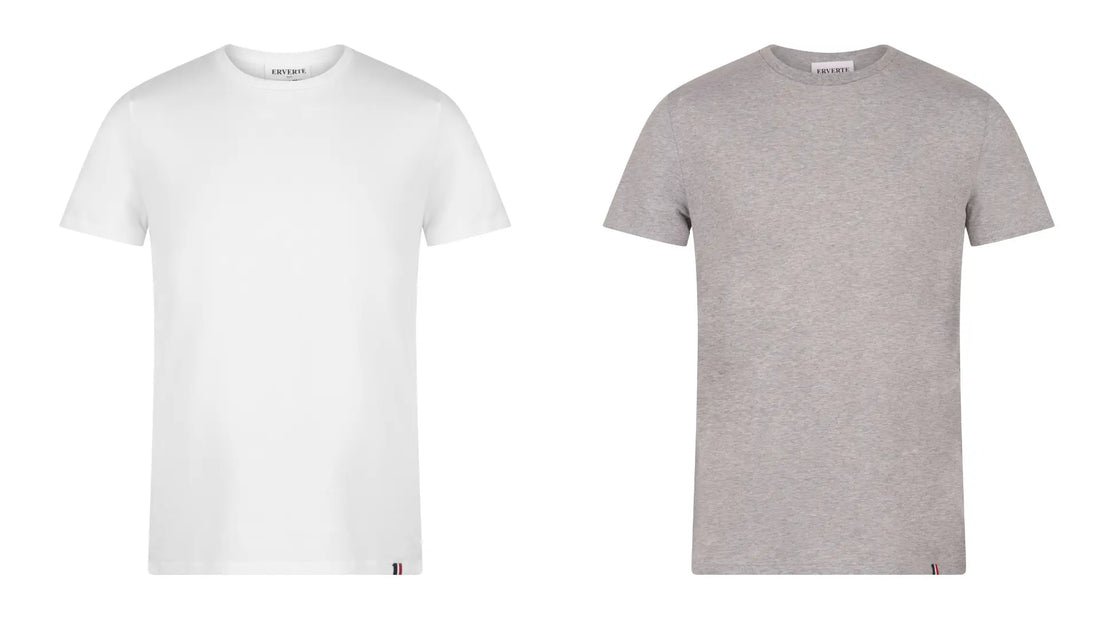
Beat the Heat: Choosing the Right T-Shirt Color Based on Heat Absorption Studies
Share
When temperatures soar, the color of your clothing, especially your T-shirt, can significantly impact your comfort. Different colors absorb and reflect heat in various ways, influencing how warm or cool you feel. Here's a guide based on scientific studies to help you choose the best T-shirt color for hot weather.
The Basics of Heat Absorption and Reflection
Colors behave differently under sunlight due to their properties of absorbing and reflecting visible and infrared light. Key principles include:
- Dark colors: Absorb more light and heat.
- Light colors: Reflect more light and heat.
Heat Absorption Studies by Color
Several studies have been conducted to understand how different colors absorb heat. Key findings include:
1. NASA Study on Materials and Colors: This study revealed that dark colors, such as black, absorb up to 90% of sunlight, while light colors, like white, absorb only 10-20%.
2. Textile Research: A study published in the "Journal of Thermal Biology" compared the surface temperature of T-shirts in various colors under direct sunlight. Black T-shirts reached surface temperatures 5 to 10 degrees Celsius higher than white T-shirts.
Practical Tips for Choosing Your T-Shirt Color
1. Opt for Light Colors:
- White: The best choice for hot days. It reflects nearly all sunlight, helping you stay cooler.
- Pastels: Colors like beige, light pink, light blue, and mint green are also great options. They offer similar light reflection to white while adding variety to your wardrobe.
2. Avoid Dark Colors:
- Black: Black should be avoided as it absorbs most sunlight, significantly increasing your skin temperature.
- Dark Colors: Other dark colors like navy blue, dark green, and brown have similar, though slightly less intense, effects compared to black.
3. Consider the Material:
- The material of your T-shirt is crucial. Lightweight and breathable fabrics like cotton and linen are preferable as they allow better air circulation, reducing the sensation of heat.
Additional Factors to Consider
- Reflective and UV-Protective Colors: Modern technologies include fabrics with reflective properties and built-in UV protection, enhancing comfort in extreme heat.
- Fashion and Aesthetics: While thermal comfort is essential, don't neglect style and aesthetics. Choose light colors that align with your personal style.
Conclusion
To stay cool in hot weather, prioritize light-colored T-shirts like white and pastels, considering the fabric of the garment. Avoid dark colors that absorb heat. By following these tips, you can improve your comfort and overall well-being during intense heat waves.
The Basics of Heat Absorption and Reflection
Colors behave differently under sunlight due to their properties of absorbing and reflecting visible and infrared light. Key principles include:
- Dark colors: Absorb more light and heat.
- Light colors: Reflect more light and heat.
Heat Absorption Studies by Color
Several studies have been conducted to understand how different colors absorb heat. Key findings include:
1. NASA Study on Materials and Colors: This study revealed that dark colors, such as black, absorb up to 90% of sunlight, while light colors, like white, absorb only 10-20%.
2. Textile Research: A study published in the "Journal of Thermal Biology" compared the surface temperature of T-shirts in various colors under direct sunlight. Black T-shirts reached surface temperatures 5 to 10 degrees Celsius higher than white T-shirts.
Practical Tips for Choosing Your T-Shirt Color
1. Opt for Light Colors:
- White: The best choice for hot days. It reflects nearly all sunlight, helping you stay cooler.
- Pastels: Colors like beige, light pink, light blue, and mint green are also great options. They offer similar light reflection to white while adding variety to your wardrobe.
2. Avoid Dark Colors:
- Black: Black should be avoided as it absorbs most sunlight, significantly increasing your skin temperature.
- Dark Colors: Other dark colors like navy blue, dark green, and brown have similar, though slightly less intense, effects compared to black.
3. Consider the Material:
- The material of your T-shirt is crucial. Lightweight and breathable fabrics like cotton and linen are preferable as they allow better air circulation, reducing the sensation of heat.
Additional Factors to Consider
- Reflective and UV-Protective Colors: Modern technologies include fabrics with reflective properties and built-in UV protection, enhancing comfort in extreme heat.
- Fashion and Aesthetics: While thermal comfort is essential, don't neglect style and aesthetics. Choose light colors that align with your personal style.
Conclusion
To stay cool in hot weather, prioritize light-colored T-shirts like white and pastels, considering the fabric of the garment. Avoid dark colors that absorb heat. By following these tips, you can improve your comfort and overall well-being during intense heat waves.
